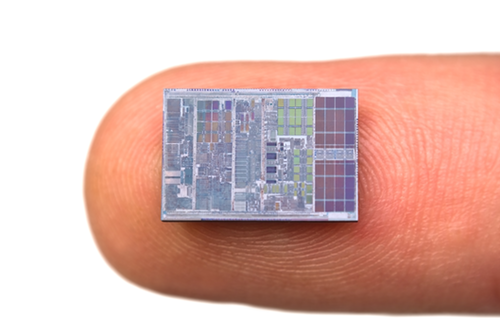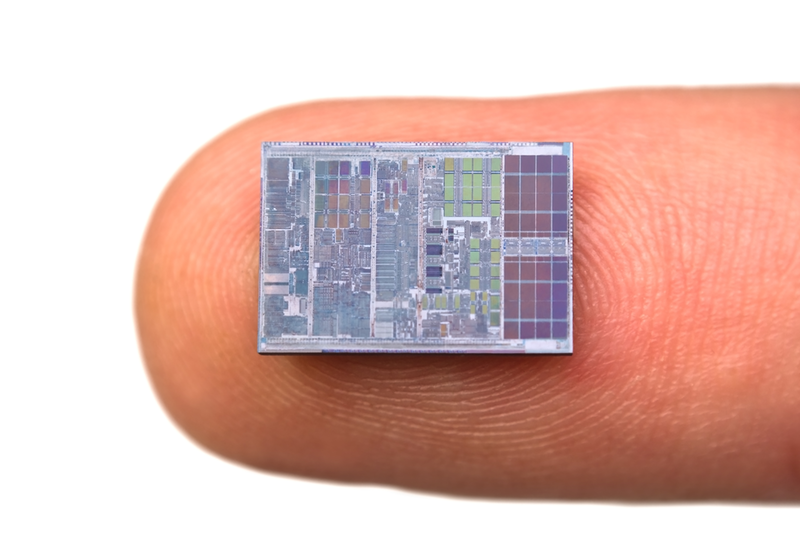A Trio of Magnon Transistors
The transistor—a device that controls the flow of electrons in a circuit—is the cornerstone of modern electronics. Now three research teams have independently demonstrated equivalent technologies for magnons, magnetic excitations associated with electron spins. These “spin transistors” can directly manipulate a spin current. The technologies could be used to perform digital operations in next generation, spin-based circuitry.
Electronic transistors control flows of electric charge in a computer chip. The smaller the transistors, the faster the chip operates, but quantum mechanics sets a minimum size. To continue improving performance, researchers are turning to alternatives, such as replacing electronic circuits with so-called magnonic circuits.
Magnonic devices run exclusively on spin currents. (Spintronic devices, another electronics alternative, include both charge and spin currents.) To picture a magnon, imagine a row of spins pointing up, representing a magnetic material, and then imagine briefly flipping the spin at one end. This motion leads to a propagating wave that moves through the material as each spin influences its neighbor. Magnons can travel quickly and efficiently over long distances—up to about a centimeter in the best materials—without significantly losing energy or heating up the material, a feat not possible for electrons. But before building fast and efficient magnonic circuits, researchers need components that can regulate magnon currents.
The magnon transistor developed by Xiufeng Han and colleagues at the Chinese Academy of Sciences in Beijing is a trilayer structure in which a nonmagnetic gold layer is sandwiched between two insulating ferromagnetic layers made of yttrium iron garnet (YIG). Magnons are generated in the two YIG layers, and the gold layer acts as a spacer to allow independent control of the YIG layers’ magnetic alignment. Spins are aligned in the plane of the sandwich, and the magnon current flows in the perpendicular direction. An additional metallic platinum layer on top of the structure converts any magnon current into a measureable voltage.
To test the device, the team applied a temperature gradient across the sandwich to generate magnons in the YIG layers. With those two layers magnetically aligned, the team measured a large magnon current, whereas the current was up to 32% smaller when the two YIG layers had antiparallel alignment. When the transistor is in this antiparallel state, the magnon currents have opposite signs and cancel each other to some extent. These results proved that the device behaves like a valve, which is one type of transistor.
The second valve transistor, made by Mathias Kläui of Johannes Gutenberg University of Mainz in Germany and colleagues [1], acts in a similar way to that of Han and co-workers, but it contains different materials—it’s a cobalt/cobalt oxide/YIG trilayer—and it generates magnons in only one layer of the device (the YIG layer). Comparing the magnon current transmitted when the cobalt and YIG layers had parallel alignments with that of the antiparallel alignment, the team measured a 290% difference.
However, the researchers suspect that the signal they detect as a magnon current in their device may also be affected by conventional electric currents. The top layer of Kläui’s group’s device is ferromagnetic cobalt, which is a metal and not a magnetic insulator and so supports both electron and magnon currents. The team is working on subtracting the electronic effects from their magnon current measurements. Ideally, says Kläui, magnonic circuit components should be made entirely from electrical insulators—a goal of both teams—in order to take full advantage of the benefits of magnons.
The third new transistor is a thin rectangle of platinum on top of a larger square of YIG, and it functions differently from the valves. Rather than using magnetic effects, Ludo Cornelissen of the University of Groningen in the Netherlands and colleagues used an electric current to vary the magnon current. In their device, the magnons are generated at one end of the YIG square and detected at the other. Additional magnons are pumped into or absorbed from the YIG depending on the spin direction of the electrons flowing in the platinum strip. When these electrons’ spins are aligned with the YIG magnons, the magnon current increases; when oppositely aligned, the magnon current decreases.
Andrii Chumak of the University of Kaiserslautern, Germany, who has developed his own magnon circuit components, says that the three magnon transistors mark the next “important milestone” in creating fully magnon-based circuitry. Magnon physicist Helmut Schultheiss of the Helmholtz Center Dresden-Rossendorf (HZDR) in Germany agrees. He says that creating magnon valves that maintain their open or closed state without having to continually apply an external magnetic field is a “very important step” that will lead to more innovations in magnonic circuitry.
This research is published in Physical Review Letters and posted on the arXiv.
–Katherine Wright
Katherine Wright is the Deputy Editor of Physics Magazine.
References
- J. Cramer et al., “Ferroic Collinear Multilayer Magnon Spin Valve,” arXiv:1706.07592.





